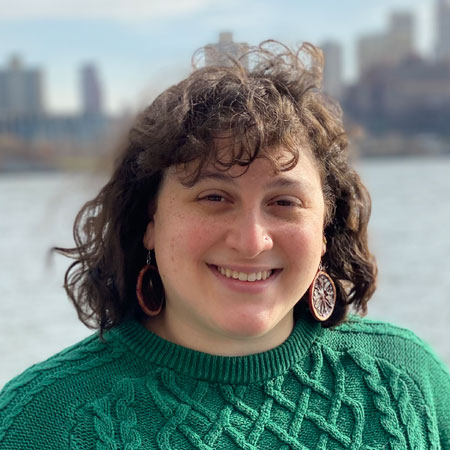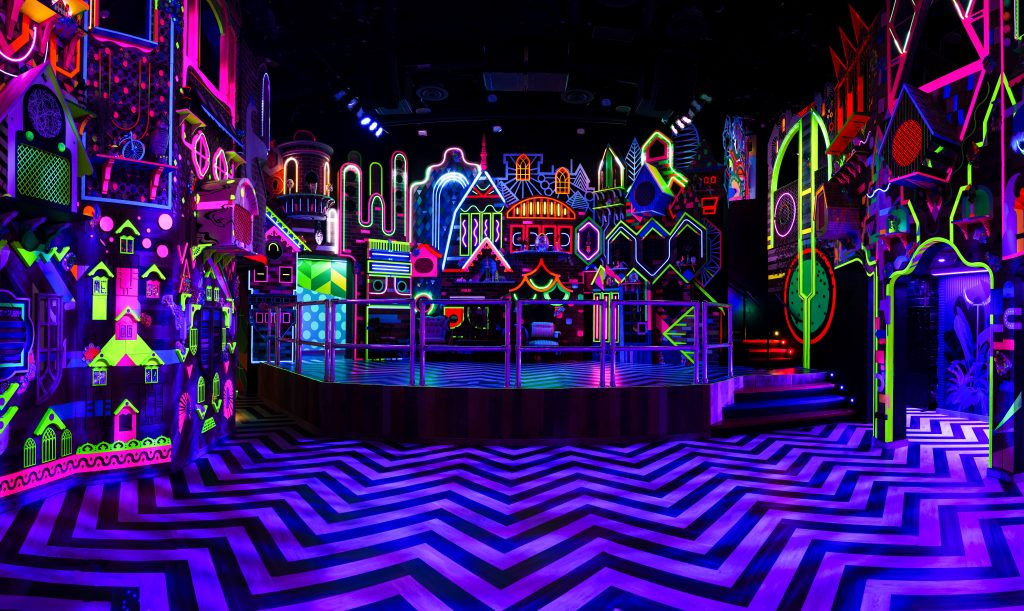Explorable art transports guests to other realities
“It’s a double-height, octagon-shaped room full of refrigerator doors—each leading to a new area or surprise. One of these doors reveals a luminous goat sculpture and triggers a dramatic lighting and audio change. The stark, white light of a fridge interior changes to bold, saturated colors while disco music plays, and a mirror ball is lowered into the room,” said Chris Werner, principal lighting designer at Chris Werner Design (CWD). This narrative anchor space called “Brrrmuda” lies within Meow Wolf in Grapevine, TX.
If it sounds like you just read about The Twilight Zone, it’s because you kind of did—”The Real Unreal” theme of the maximalist, explorable, and interactive art installation celebrates “portals to possibility” by hundreds of artists within what seems to be a suburban family home, complete with a moonlit yard—inside the Grapevine Mills Mall.
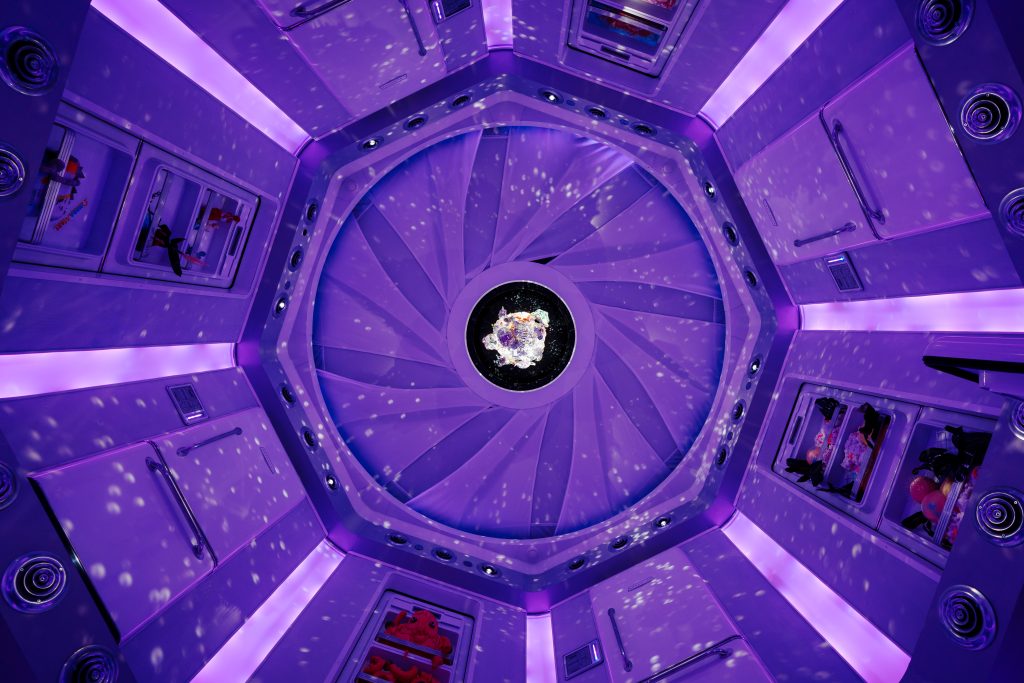
CWD’s scope of lighting design for the 25,000-sq ft project included the “Show” lighting: guest-accessible areas that were part of the narrative. “Many of the designers and artists at Meow Wolf incorporated lighting within their individual pieces,” explained Werner. “In addition to defining the lighting aesthetic and lighting color-story for the overall exhibition, we provided consultation to those artists on the subjects’ product selection, control protocols, and hardware integration. We specified lighting equipment, created layouts, and designed the control system. Once on-site, we led focus and programming efforts. My team was on-site for approximately five months with the folks from [lighting integrator] Vincent Lighting Systems (VLS). We programmed alongside the creative engineers and designers from Meow Wolf, creating some remarkable art. The process felt truly collaborative.”
The project is Meow Wolf’s fourth installation and welcomed the public to explore narrative anchors including “The Forest,” “Lamp Shop Alley,” and “Neon Kingdom,” among others, in July 2023. The exhibit encourages guest engagement via tactical exploration as well as a digital app.
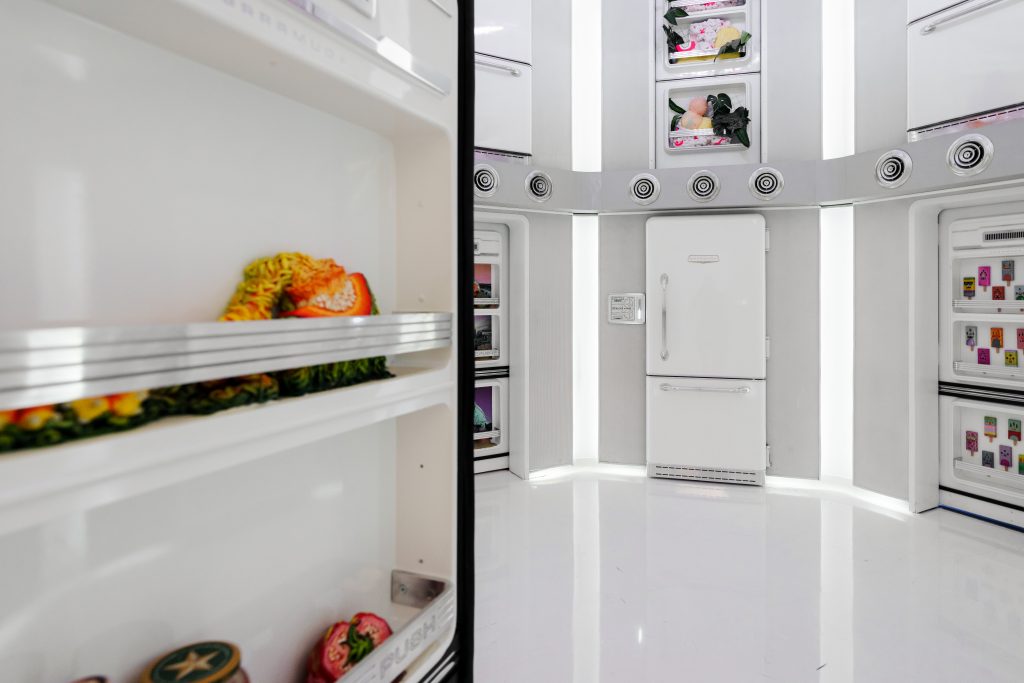
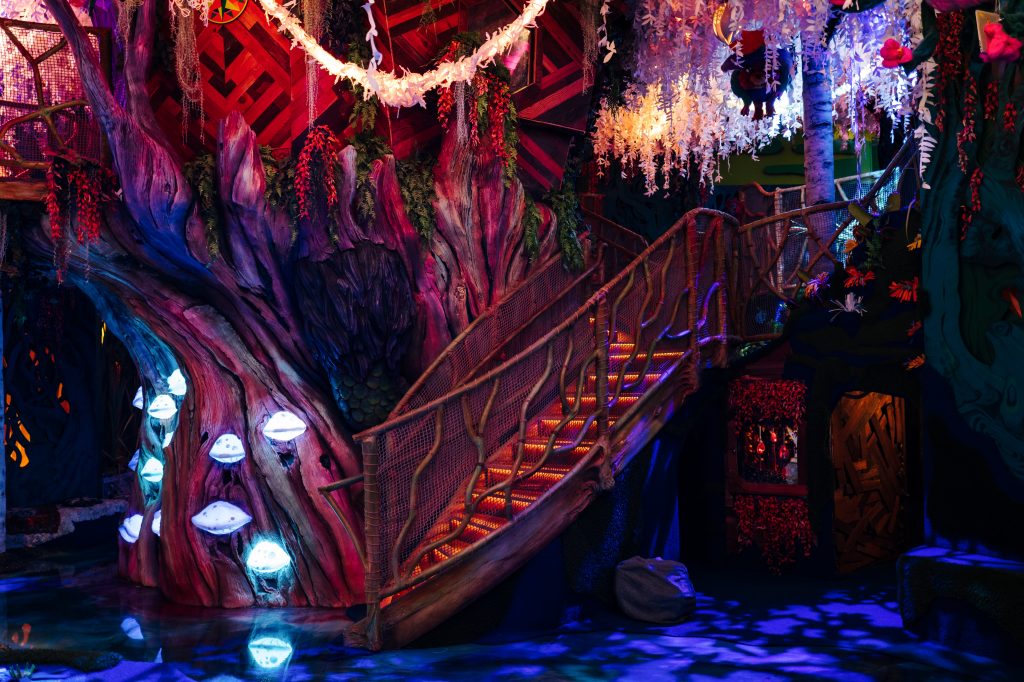
Though Werner explained many of the installations’ secret responsive “Easter eggs” have been revealed by fans on websites like Reddit, there is still yet more to learn about the behind-the-scenes reality that goes into making an otherworldly experience. Creative challenges such as the makeup of the project itself—multiple anchors, each with a different creative director and motif—as well as real-world logistical delays post-COVID-19 contributed to the making of the installation. The creative challenges were “among the project’s most rewarding components,” said Werner. “We worked to support the wide varieties of visions and design intents while seeking opportunities to maximize utility and bring all devices under a unified, cohesive control system.”
The control system, run by cloud-manageable Q-SYS, was designed and programmed by the Meow Wolf team and installed by ProSound to function as the top-level controller. The complex control platform supports diagnostic function, synchronizes playback, and serves as an interface for operators for the nearly 150 individually programmed rooms. Additionally, ETC’s Paradigm manages exhibit-wide power, while the brand’s Mosaic Show Controllers aid in playback and interactive components; these control elements were specified, designed, and programmed by the CWD team and installed by VLS. The Mosaic Controllers’ functions are based on custom-scripted timelines, of which there are a collection for each room, and then sometimes for various states within in each room. “In some cases, that means Operation Look vs. Maintenance Look vs. Overnight Look. In other cases, that script triggers show sequences or guest-triggered looks,” said Werner. While there are hundreds of examples of ways in which the control system supports the various immersive atmospheres inside the installation, just one is that the tempo of the music track in “Neon Kingdom”— which is a callback to an anchor in Meow Wolf’s original location in Santa Fe, NM, and doubles as an event space—is synced to dynamic visuals matched to pixel-mapped faux-neon tape.
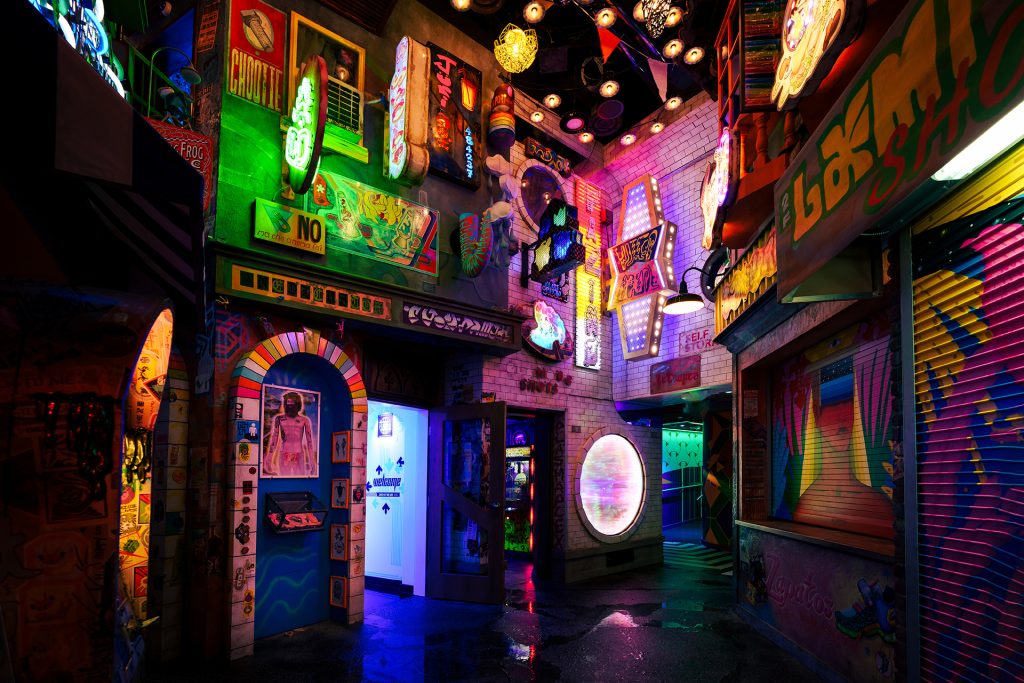
LED pixel tape played a large role in realizing CWD’s unified lighting vision—over a mile of it was used in the exhibition. “This project has a lot of LED tape of various types,” explained Werner. “We chose Environmental Lights as our preferred tape manufacturer for most instances. For pixel control, we chose Advatek PixLite Mk3, controlled via sACN.” Additional tools the team implemented in the design strategy include 2,000 color-mixing fixtures like recessed downlights, pendant downlights, and track heads by Times Square Lighting and theatrical fixtures from ETC, Chauvet, and Elation, as well as integrated fabric-lit pieces and concealed egress fixtures—to name a few.
Art for the Soul and Lights for Well-being
For as wacky as Meow Wolf Grapevine is, and as hard as the lights work to allow guests to forget reality and live as though they are in other realms, both the brand and the lighting design strategy take various forms of end-user well-being into careful consideration. Meow Wolf, created by a small art collective in 2008, is a Certified B Corp and Benefit Corporation as well as a Certified Autism Center, providing access to exhibits to nonprofits and youth groups in underserved communities: the brand offers paid internships to college students; incorporates re-used materials including e-waste, discarded plastics, and more into artworks; and embraces differently abled visitors and staff by providing various services that allow anyone to enjoy the absurdity of the space.
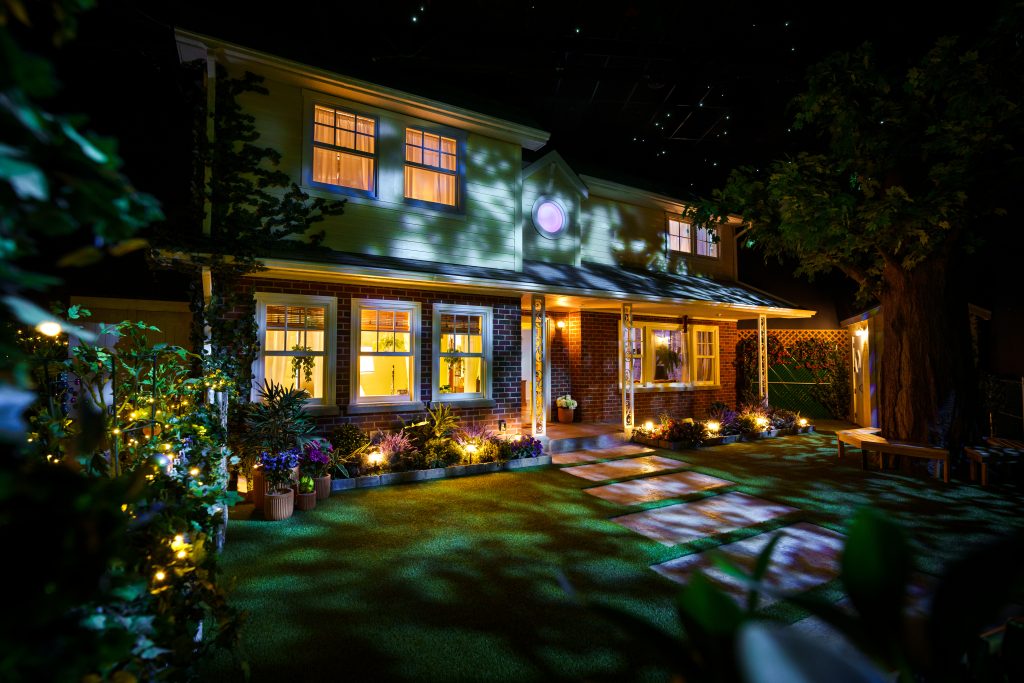
From a design standpoint, not only are visitors taken from “The Delaney House” into liminal spaces like an “Optic Drift” and “Glowquarium,” they are also taken from dark to bright spaces several times. It was imperative for CWD to strategize ways to avoid visitor eye fatigue and provide safety lighting that didn’t distract from the detailed narrative. Thus, the transition from dark to light “occurs as gently as possible, with guests passing through a series of incrementally darkening spaces,” explained Werner. Additionally, monitored light levels near egress passages aid in balanced illumination levels from the front-of-house to the exterior. Werner continued, “We used Concealite Concealed Emergency Lights where possible. In other areas, we used Emergency Lighting Transfer Switches and DMX Emergency Bypass Controllers from Electronic Theater Controls to utilize the permanent show lighting to function as egress lighting in the event of power loss or an emergency. The team at EXP was the electrical engineer, responsible for evaluating our layout.”
Finally, the team kept the project as energy efficient as possible in using high-efficacy LEDs, occupancy sensors for off-hours, and daylight sensors near exteriors for consumption reduction— making “The Real Unreal” supportive of the reality we live in outside of Meow Wolf’s doors.
Easter Eggs Aplenty

In keeping with Meow Wolf’s penchant for dropping Easter eggs and hints for explorers to find on their expeditions, LD+A has one for our readership, too. Here’s a sneak peek at Meow Wolf’s newest installation completed in the last quarter of 2024. “Radio Tave” reveals the surreality behind a honkey-tonk dive bar in Houston— also featuring lighting design by CWD.
THE DESIGNERS |
- Chris Werner is principal at CWD.
- Kyle Arnold is a freelance designer for CWD.
- Alex Stevens is a freelance designer for CWD.
- Ron Kline is director of business development, Cultural and Themed Entertainment at VLS.
- Jimmy Mish is a field service technician at VLS.
- Bryan Mravec is director of professional services, Cultural and Themed Entertainment at VLS.
- Lindsay Dixon is a lighting designer at EXP.

